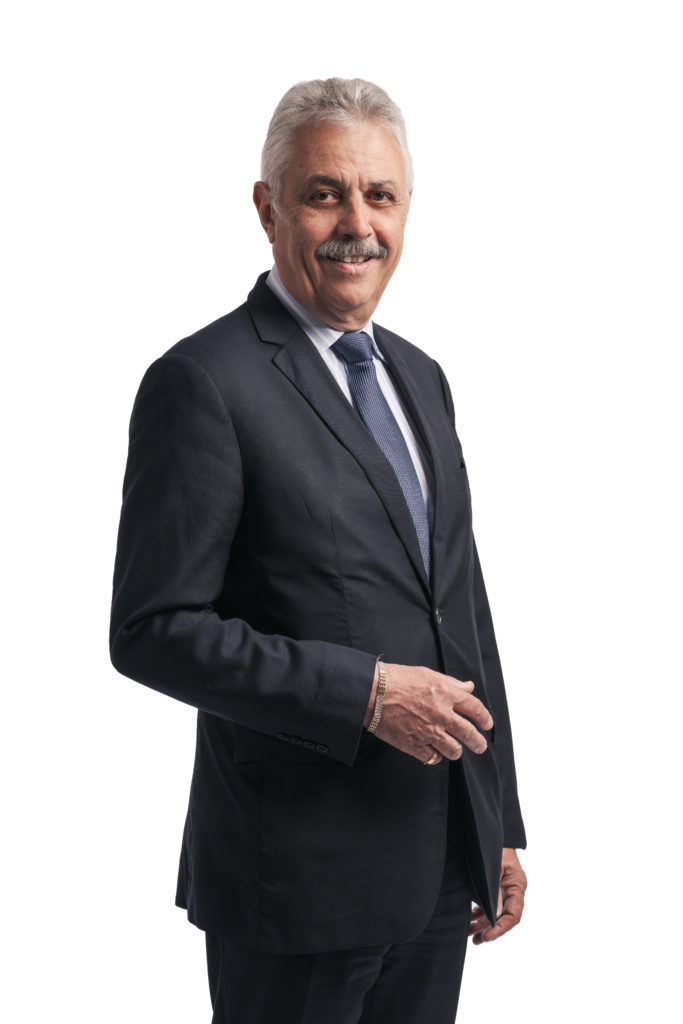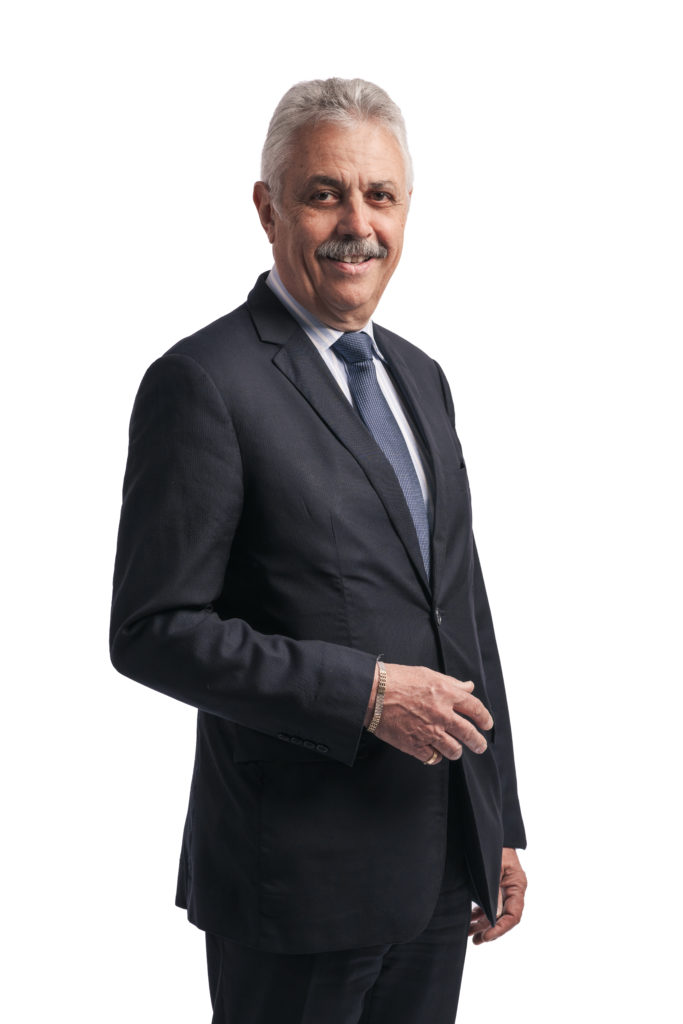Serge Nocodie: “Climate planning needs to enable local authorities toanticipate the challenges of tomorrow”


Serge Nocodie is the president of Auvergne-Rhône-Alpes Energy Environment, the energy agency of the French Auvergne-Rhône-Alpes region (AURA-EE) since 2013. Serge dedicated most of his professional career to supporting municipalities and regions in their energy and climate transition. He is passionate about public policies and their local impact on climate mitigation and adaptation measures. He was the municipal councillor of the city of Grenoble for urban regulation from 1995 to 2014. Since early 2000, as President of 2 local energy utility companies, Serge has been involved in the deployment of RES solutions, especially in biomass. Since 2008, Serge Nocodie is vice-president for district heating, wind and biomass of AMORCE (national association bringing together local authorities, associations and enterprises involved in managing waste, energy and heating networks). Since 2015, Serge is also FEDARENE Vice-President for Climate Action.
In Several EU
Member States, municipalities are bound by national law to implement Climate
& Energy Plans, which has led them to work with new obligations and with the
necessity to consider adaptation to Climate Change measures. This, however, has
revealed to be difficult while dealing with continuous crises related to
Extreme Weather Conditions. As AURA-EE’s President, can you explain how the
agency has addressed this matter? What measures should we establish at the
European level to facilitate the work of local and regional authorities?
The effects of climate change are now largely
visible in all European regions: floods, droughts, fires, heatwaves, etc. Often,
the consequences increase at a faster pace compared to what was originally
planned. Public authorities answer risks incurred by citizens in emergency
situations with immediate security measures. These emergency measures are
challenging the investment plans of local authorities who are already under
increasing budgetary constraint, especially when they require the
reconstruction of infrastructures, for example. Understanding the implications
of climate change and prioritizing the measures that need to be taken becomes a
priority but complex exercise for these authorities who are forced to invest to
fix the recurring damages at the expense of anticipation actions.
Whether mandatory like in several EU Member
States or voluntary like the Covenant of Mayors for Climate & Energy
initiative, climate planning thus needs to enable local public authorities to
answer immediate expectations of their territories and anticipate the
challenges of tomorrow. In France, many planning efforts have already been
undertaken, to answer the regulatory demands for municipalities of more than 20
000 inhabitants or in a voluntary manner for Positive Energy Territories. AURA-EE
has been supporting its local authorities for several decades now, both in
their planning efforts as well as for the implementation of concrete projects.
Several lessons have been learned:
- The need of a strong local and regional support
to address the issues of mitigation and adaptation with all the actors
involved. The energy and climate agencies play a decisive role of facilitators
both for the understanding of issues and for the implementation of strategies
and concrete projects; - The necessity to implement decision-support
tools as close to the local needs as possible. These tools aim to facilitate
the decision-making process thanks to the provision of energy, climate and
economic data by territory; - The need for a long-term vision including
intermediary objectives (2030) allowing for a mobilisation, choices and the
implementation of concrete actions; - The need for innovative governance tools promoting
for example prevention and conflict management over the use of land and natural
resources of which the availability is more and more subject to climate change.
European networks like FEDARENE contribute to
reinforce the action and the commitment of local and regional actors by
facilitating the exchange of experiences and by developing new European
initiatives and cooperation projects. The EU must keep supporting these
networks and highlighting the work done by local initiatives in terms of
anticipation.
One way to support Municipalities
in anticipating climate crises and implementing adaptation measures on their territories
is to provide them with concrete Climate & Energy data. How is data
monitoring taking place in Auvergne-Rhône-Alpes? Are there any lessons that you
would like to share with other European regions to improve their monitoring
efforts?
The monitoring of undertaken actions and the
modelling of climate impacts require an access to reliable local data. As
resource centre for public authorities and communities, AURA-EE provides local
energy data, data related to GHG emissions and to climate change impacts. In
order to respond to the demands of territories, the agency develops and
technically coordinates decision-support tools such as:
- ORCAE, the climate,
air and energy regional observatory, provides territories with local data that
are actualised and verified, which is essential in order to implement
integrated mitigation and adaptation measures to climate change, as well as
actions concerning air quality. - TerriSTORY,
an online visualisation tool of territorialised data and decision support-tool
that we hope can be replicated by other EU regions.
The method of data acquisition, processing and
dissemination requires know-how in terms of setting advanced partnerships, data
modelling and sharing. For several years now, with the support of FEDARENE, AURA-EE
has been cooperating with organisations on local energy data inside the
European network ENERGee-Watch. In the case of adaptation, the data used to
measure the impacts of climate change is very diverse, coming from multiple
sectors such as agriculture, forestry, water management or tourism. For each
sector, it is important to focus on the appropriate indicators by initially identifying
the vulnerabilities of territories. As these indicators can be very specific,
it is necessary to form win-win data-sharing partnerships. These exchanges
build on bottom-up (e.g. field study or local observation) or top-down (data
disaggregation) processes. We will consider how we can extend the field of ENERGee-Watch to include data on which regions and cities are
the most affected by climate change impacts and how we can reduce their
vulnerability.
According to you, other than data sharing and monitoring,
what are the concrete solutions that local and regional authorities and their
energy agencies can implement to deal with adaptation to Climate Change?
Climate crises caused by heatwaves are particularly
significant in urban environments. Cities will have to face these extreme conditions
and implement adaptation measures such as these based on nature: revegetation,
shared gardens, rehabilitation of watercourses, rainwater harvesting, etc. These
measures are often very effective. They require a transversal approach of urban
planning inside communities and public authorities.
Other concrete actions can be put in place to
answer the need of buildings cooling. Many cities are already using existing
heating networks to set up cooling systems. In some cases, they can choose to
feed the network through cold sustainable energy sources (sustainable cooling),
as with geothermal or hydrothermal energy. These solutions offer strong
potential and allow for an integrated approach combining mitigation and
adaptation to climate change. Local support is often needed to counter the factors
hindering the mobilisation of stakeholders. Energy agencies can largely
contribute to the implementation of adaptation measures by exchanging
experiences and developing projects.
As FEDARENE Vice-President for
Climate Action, how do you see your role in this matter and what do you want to
implement during your Vice-Presidency?
In its reflexions on the European Green Deal and
in the definition of new EU funding programmes and policy legislatives, the
Commission will have to consider these local initiatives and to recognise the
complexity of adaptation the local level. It will need to support energy
agencies in their evolution towards energy and climate agencies. This could
be done through dedicated funding (SAVE CLIMATE type); support to
experience-sharing and training projects/tools (for example a new ManagEnergy
initiative focused on adaptation); dedicated call for projects in the framework
of new programmes supporting European initiatives of agencies in key sectors
such as:
- Access to local data, integrating more clearly
the stake of territorial resources in a systemic vision; - The prevention and management of natural
resources conflicts; - The support of nature-based solutions and
solutions based on sustainable cooling production;
In
order to continue this reflexion and better answer the expectations of agencies
and public authorities, AURA-EE will support FEDARENE in organising, in the
framework of its Vice-Presidency for Climate Action, exchanges of experiences
between stakeholders of the field and the European Commission.
Moreover,
I suggest to put in place a working group on Climate Action and Data Monitoring
within FEDARENE to encourage all members to exchange their experience on the
subject and identify best practises to be replicated. It will help members to
extend the scope and activities of the ENERGee-Watch European network to local
data for climate action. I believe AURA-EE can contribute to coordinate such
group thanks to its experience with ORCAE, the climate, air and energy regional
observatory. In this framework I will propose that the working group meets at
least once a year and that a support document and online tool will be produced during
the Climate Action Vice-Presidency.
The post Serge Nocodie: “Climate planning needs to enable local authorities toanticipate the challenges of tomorrow” appeared first on Fedarene.
Fuente: FEDARENE
Enlace a la noticia: Serge Nocodie: “Climate planning needs to enable local authorities toanticipate the challenges of tomorrow”

